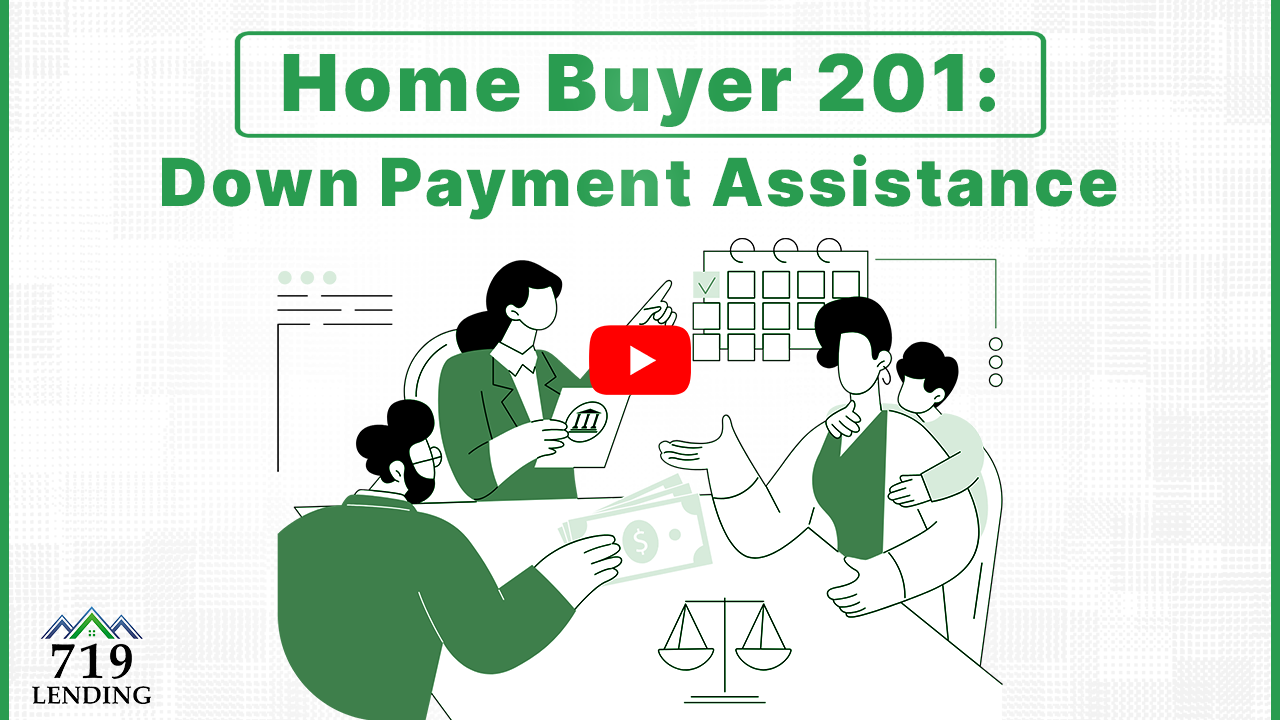6 minute lesson Lesson Summary Importance of timely document submission for your loan Types of…
Homebuyer 101: VA Benefits Limitations
Lesson Summary
-
When using VA benefits to buy a new home, it is expected that the home will be your primary residence.
-
Service members can own multiple homes using their VA benefits by living in one home for a period of time and then renting it out.
-
VA benefits can also be used to purchase multi-unit homes, allowing for investment properties.
-
It is important to understand the nuances of using VA benefits for homebuying and to reach out for assistance to ensure a smooth loan process.
Imagine you’ve just received the keys to your new Colorado Springs home, purchased using your VA benefits as a symbol of service and sacrifice.
VA loans come with a foundational stipulation — the purchased home must blossom into your primary residence, a haven reflecting your commitment to permanence.
Primary Residence Requirement
To maintain VA loan compliance, buyers must occupy the new home as their main living quarters. The Department of Veterans Affairs enforces this occupancy rule to prevent misuse of the benefit, ensuring it aids those who served.
As a safeguard, the VA requires homeowners to move into the property usually within 60 days of closing. Exceptions might apply under specific circumstances, but the intent to reside must be clear and verifiable to satisfy VA guidelines.
The term “primary residence” means that home is the central hub of your daily life and activities.
Understanding Occupancy Rules
When utilizing VA benefits to purchase a home, the expectation is clear: the home must be your primary living space, a testament to your commitment to reside within it.
To comply with the VA’s requirements, you must inhabit the home shortly after closing—this is non-negotiable. It’s an assurance to the VA that the benefit is used for its intended purpose, not for secondary homes or casual investments.
VA loans are not just for houses—they can finance multi-unit dwellings too.
While the home must start as your primary residence, circumstances may evolve. Relocation or changes in military orders can lead to renting out your former home. Yet the central principle remains intact: any subsequent use of VA benefits must be for another primary residence you intend to occupy.
Consequences of Non-Compliance
Violating occupancy requirements can lead to repercussions. The VA strictly enforces residence stipulations, and deviation could trigger an investigation or audit.
Non-compliance can have serious financial implications. If the VA determines that a home purchase does not comply with primary residence requirements, they may demand immediate repayment of the outstanding loan balance. This situation arises when there’s clear evidence of intent to use the property primarily as an investment or rental from the outset, contradicting the initial occupancy certification.
Moreover, misrepresenting occupancy intentions could result in a loss of VA benefits. This may include a foreclosure on the loan, loss of eligibility for future VA loans, and potentially being flagged for fraud. Repercussions extend beyond immediate financial strain, as it tarnishes your credibility with the VA and other lending institutions.
Finally, military personnel found violating VA loan occupancy rules may face additional disciplinary action. This could encompass penalties under the Uniform Code of Military Justice (UCMJ), including charges of fraud. Such consequences echo the importance of adhering to VA loan regulations and maintaining the integrity of its programs for veterans and service members alike. Failure to comply not only jeopardizes financial standing but could also have lasting effects on military careers and benefits.
VA Loan Entitlement Limits
VA loan entitlement is a vital concept, serving as the guaranty amount the Department of Veterans Affairs promises to the lender. It’s important to understand that while the VA doesn’t cap the amount a service member can borrow, there is a limit to the amount they can guarantee without a down payment. Often, this ceiling is shaped by county loan limits and may change annually, reflecting shifts in the housing market.
If you’re envisioning purchasing a second home with VA benefits, be cognizant of remaining entitlement. This leftover eligibility can be utilized, but it’s contingent on several factors, including prior loan balance, market area loan limits, and your specific entitlement amount. A comfortably navigated conversation with a seasoned VA loan specialist can demystify these complexities.
Calculating Remaining Eligibility
Understanding your remaining VA loan entitlement is crucial for your next home purchase.
- Calculate the original entitlement and subtract the amount already used.
- Factor in the county loan limits where the new property is located.
- Consider any restoration of entitlement if previous VA loans have been paid off.
- Include secondary entitlement benefits for higher-priced homes, if applicable.
Consult with a VA loan expert to accurately determine your remaining entitlement.
This calculation ensures you won’t exceed the guaranty limit without a down payment.
The Impact on Multiple Properties
Veteran homebuyers can indeed harness their VA benefits to acquire multiple properties over time.
- Primary Residence Requirement: Originally, a purchased property must be intended as your primary home.
- Subsequent Occupancy: You can later rent out this property if you’ve satisfied initial occupancy expectations.
- Leveraging Remaining Entitlement: Use any residual entitlement to secure another property as a primary residence.
- Multi-Unit Properties: VA loans allow buying up to four units, living in one, and renting out the others.
Remaining entitlement is paramount when financing additional residences with VA benefits.
Crafting a portfolio of properties via VA loans demands strategic entitlement management and professional guidance.
Investment Properties with VA Loans
Entering the realm of real estate investment with a VA loan comes with a specific mandate: the multi-unit property procured must include your primary residence. In practical terms, this means purchasing a duplex, triplex, or fourplex, occupying one of the units as your main domicile while renting out the additional units. It’s a savvy strategy that intertwines residential utility with investment potential—presuming compliance with VA’s occupancy policies.
Yet, this clever maneuver is not without its contingencies. Imagine a chessboard where each move is carefully calculated for maximum advantage; securing a VA loan for an investment property requires a similarly strategic approach. You must reside in one of the multiple units initially, thus fulfilling the occupancy requirement intrinsic to all VA loans. Simultaneously, thoughtful planning ensures that your actions align with VA guidelines, preserving future lending opportunities and optimizing your position in the real estate game.
Leveraging Multifamily Units
The VA stipulates occupying the unit within 60 days of closing. It’s a concrete timeline ensuring the benefit serves its intended purpose.
With meticulous strategy, investors convert units to rentals post-occupancy. This process honors the VA mandate while fostering passive income channels, reinforcing financial resilience.
Factor in market conditions when evaluating multifamily units. An insightful acquisition can mean stable rental yields underpinned by a VA-financed purchase, marrying pragmatism with foresight.
Reselling a VA-loaned multifamily property demands nuanced understanding. Manage this wisely to uphold VA benefit integrity and secure future real estate maneuvers with ease.
Ultimately, commitment to occupancy dovetails with investment acumen, leveraging VA loans into robust real estate portfolios, serving veterans’ housing and wealth-building aspirations.
Restrictions on Rental Properties
Your VA loan must first anchor a primary residence, not a straight path to rental enterprise. This distinction ensures compliance and preserves benefits.
Flipping a VA-financed property to a rental too swiftly can trigger red flags. Intent matters greatly here.
Remember, converting a VA-backed home into a rental is permissible, provided you’ve adhered to initial occupancy requirements. VA loans hinge on trust, ensuring service members first establish their homes before pivoting to rental endeavors.
To transition a VA-secured property into a rental, you must validate your residency tenure and intent at purchase. Missteps here can jeopardize benefits or lead to inquiries by the VA office. Such conversions should not be improvised; strategic planning is vital to maintain the good standing of your VA benefits.
Navigating VA Loan Nuances
Navigating the particulars of VA loans necessitates an eye for detail and a proactive mindset. As a homebuyer, you’re laying the foundations for your future, and a VA loan can be a cornerstone of this pivotal moment. Understanding the primary residence requirement is crucial—it’s not just about signing papers; it’s affirming your commitment to a home you’ll inhabit and cherish. Should your life’s course shift, and you eventually pivot towards renting out the property, it’s imperative that the initial use aligns with VA stipulations. Embrace the strategic nuances of utilizing your VA loan, but always ensure your actions reflect the program’s intentions to avoid potential complications down the line.
The Importance of Proper Guidance
Navigating VA benefits requires more than cursory knowledge; it demands in-depth understanding. Without proper guidance, potential missteps could derail the home buying process. Expert advice steers you clear of common pitfalls, ensuring a smooth journey in utilizing Veterans Affairs resources.
When you’re diving into the world of VA loans, the intricacies can be overwhelming. Qualified professionals provide clarity, helping you grasp the nuances of eligibility and occupancy requirements. Such advice is indispensable in harnessing the full potential of your VA benefits without unnecessary hitches.
Full comprehension of VA loan entitlement is crucial, particularly when considering future rental opportunities. A seasoned advisor will help you utilize your entitlement judiciously, ensuring your decisions align with Veterans Affairs guidelines while optimizing your investment strategy.
Understanding your VA loan limits and the implications for purchasing multi-unit properties is a task for specialists. They ensure you navigate regulations correctly, fully exploiting the chance to acquire investment properties without compromising loan compliance.
To secure your investment and benefits, lean on experienced professionals. They are your allies in realizing the dream of homeownership while respecting the stipulations that protect your VA benefits.
Ensuring Smooth Loan Processing
Accurate preparation and understanding are key to a seamless VA loan experience.
- Gather Essential Documents: Collect all required documentation beforehand, including proof of service, income, and credit history.
- Understand Your Entitlement: Know the specifics of your VA loan entitlement and how it affects your purchasing power.
- Seek Pre-Approval: Engaging in the pre-approval process can expedite your home buying journey and provide leverage in negotiations.
- Leverage Expert Guidance: Work closely with a VA loan specialist to understand nuances and ensure compliance with VA regulations.
- Maintain Open Communication: Keep lines of communication open with your lender to address concerns and questions timely.
A well-defined action plan is your roadmap to success.
Clarity on the primary residence requirement ensures proper use of your VA benefits.




